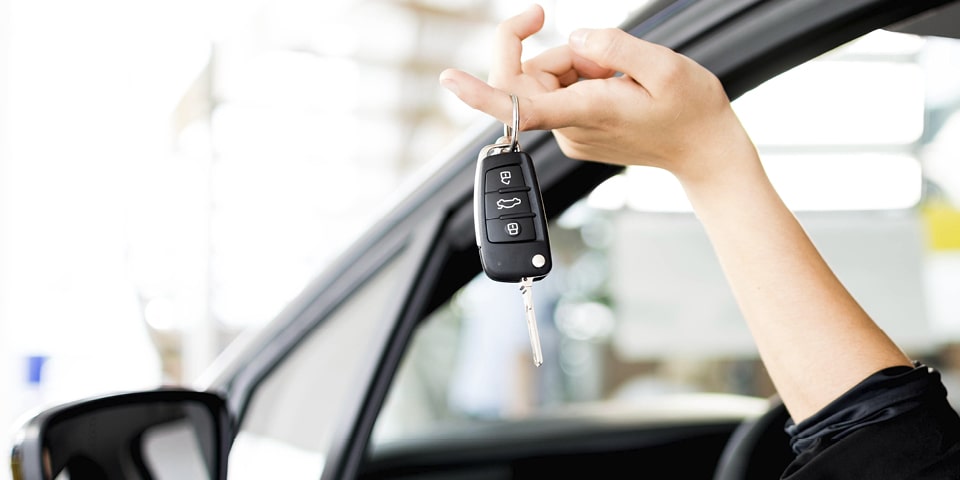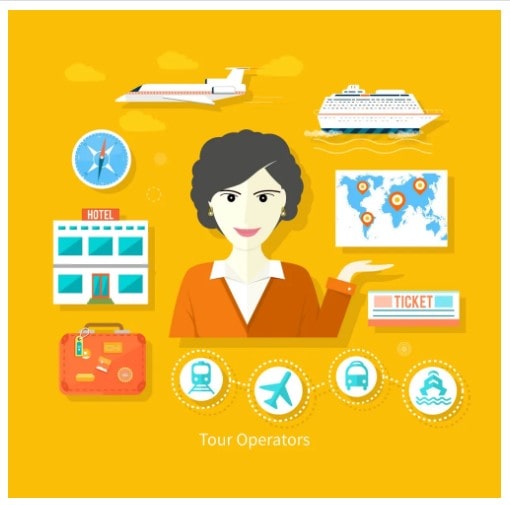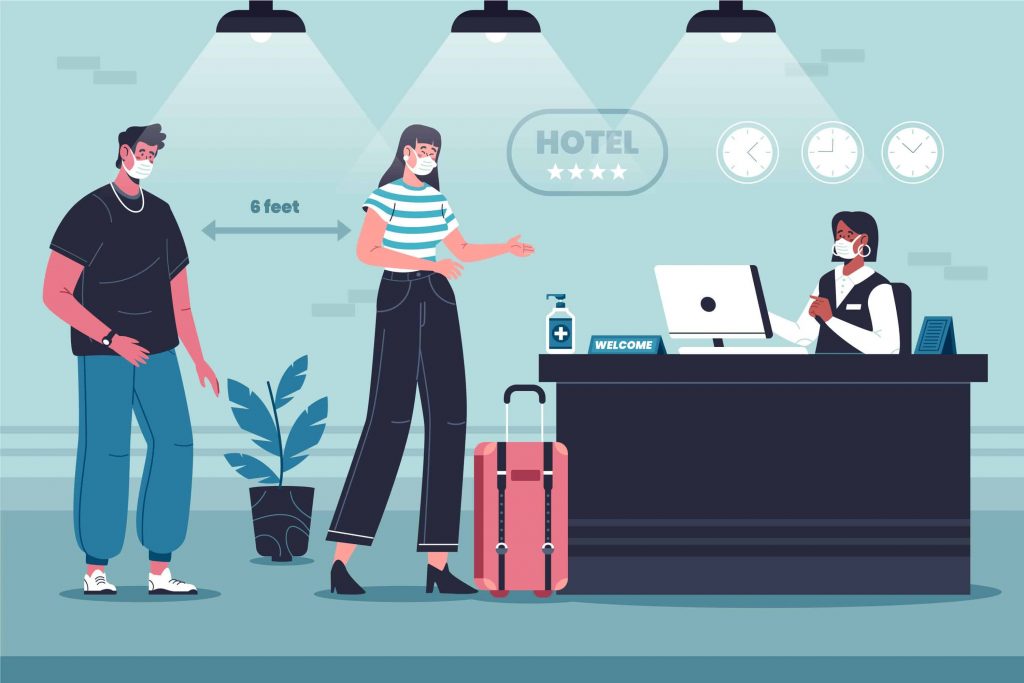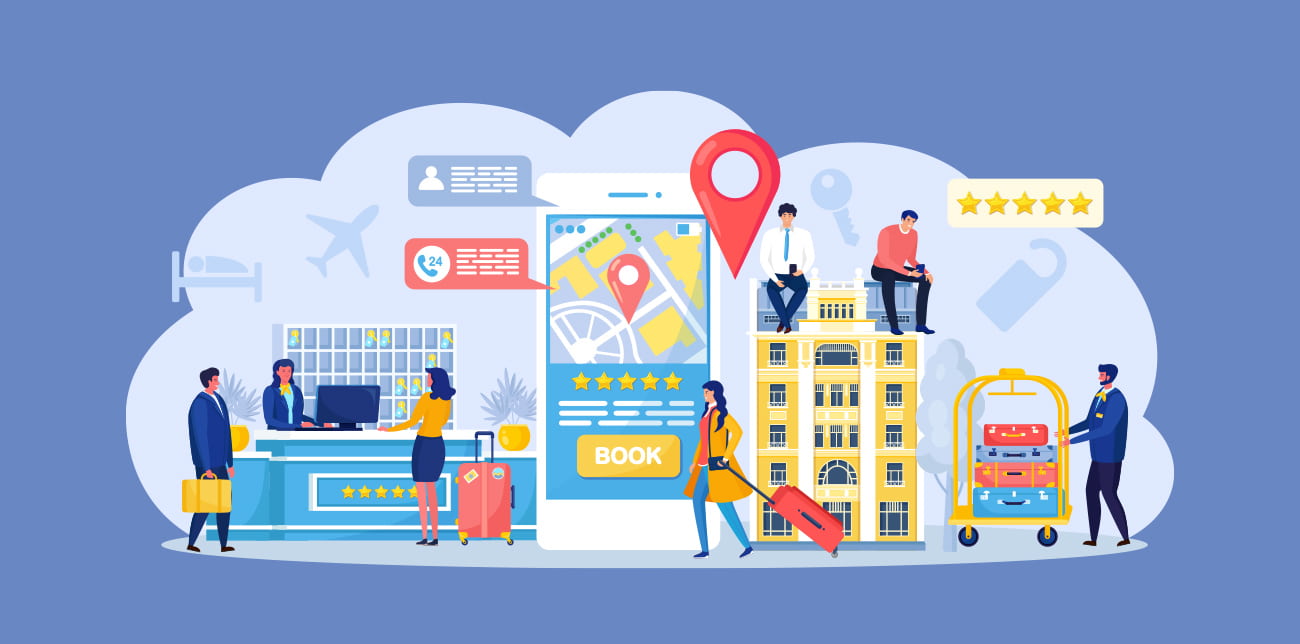Similar to retail, customer engagement extends to every sector that entails meaningful interactions between a brand and its customers. With customer retention being always crucial, numbers show that a robust omnichannel philosophy is vital for any business. On average, 89% of customers remain loyal to brands that invest in customer engagement, whereas for companies that lack such aspects, the retention rate dramatically decreases to 33%. Normally, the tourism industry could not be omitted from that long list of enterprises dedicated to making consumers feel appreciated and taken care of.
New technologies brought profound competition to the tourism providers, thus making the need for differentiation all the more important. Once again, customer engagement strategies for tourism are playing a very important part in the cognitive and emotional decision-making process of every traveler that wishes to visit a new destination. With both direct and indirect benefits, tourism engagement can significantly increase a brand’s net sales and profit margin growth.
Moreover, the cultivation of meaningful relationships improves the visitor experience, their feedback, and their lasting loyalty. This article is dedicated to all the important strategies tourism professionals should take into consideration and incentivize them in bettering their marketing plans for higher conversions.
Table of Contents
Customer engagement strategies for tourism: Hotels

As always, besides content marketing, omnichannel visitor engagement must be the core of your strategy. Implement a holistic marketing plan and make sure you use the correct channels for the correct audiences.
Strategy #1: Setup segmented automations
Why it works:
Customers love personalization, and generic promotions no longer provide credible results. Segmenting your audience with advanced attributes and behavioral activities is the first strategy to implement. Create target groups based on both superficial parameters, like gender and location, and proceed with more advanced criteria. Start by either dividing your audience into business or leisure, VIP, new or returning customers and communicate with differentiated messages based on your segments’ interests. Addressing your customers’ pain points separately is what will make your brand stand out and get a competitive advantage.
Strategy #2: Control your orders more efficiently
Why it works:
Partnering up with a powerful omnichannel customer engagement solution will give you the flexibility you need to control your orders and your clients more efficiently. All your transactional emails will be automatically set up and will allow you to focus on your marketing strategy uninterrupted. One of the most important customer engagement strategies for tourism is to boost your online presence with an easy-to-use software and solidify your marketing plans.
Strategy #3: Send post-check-out thank-you emails and reviews
Why it works:
Being proactive is better than being reactive. Also, it is always preferable to ask for customer reviews before your guests have a chance to submit negative feedback on your social accounts. Keep in mind, that for every negative review, you need five positive ones to maintain the balance of your overall ratings. To do damage control, you can design well-drafted, appreciative emails, thanking your visitors for choosing your brand and providing you with their feedback.
Directly address their concerns or, if necessary, compensate them for their bad experience with a future discount. In the end, you will be able to alter their impression of your brand, before their reviews reach online platforms that will prevent future customers from visiting you.
Strategy #4: Keep in touch with your customers
Why it works:
Your social media accounts should be updated on a daily basis, as your loyal followers need to be informed of every offer. Covid-19 may have put our traveling plans on hold, but the need for an escape is still present. Schedule your online posts and enrich them with videos, reviews, photos, and inspiring content.
Apart from your social media, send personalized messages, via email, SMS, or push notifications to your customers with offers based on their previous activities. Note that you need to separate your segments and use appropriate channels for each of them.
Strategy #5: Create promotional emails with limited-time offers
Why it works:
Promotional emails increase brand awareness and customer loyalty while generating revenue. Your clients need to be informed about every possible promotional campaign, so advertise booking arrangements with discounts, in-house events, or all-inclusive deals.
Join forces with your social media department and share your content via high-quality visuals and appealing CTAs. However, make sure to keep the generic emails to a minimum, as it is best to communicate with your contacts with a more personalized touch.

Customer engagement strategies for tourism: Airlines

The airline industry was always a leader in customer engagement strategies for tourism, with exemplary marketing tips that expanded across the entire sector. Airlines are some of the most profitable businesses as they are aware of their customers’ needs, cultivating customer loyalty, and assuring lifetime value.
Strategy #1: Increase cross-sell and upsell booking offers
Why it works:
Cross-sell and upsell may be used interchangeably, but they refer to different kinds of marketing promotions. Notwithstanding, they are both based on customer behavior as they recommend personalized products or services referring to past or current activities.
Cross-sell will invite customers to book tickets for similar destinations or add relevant services to their existing reservations. On the other hand, upsell will encourage travelers to upgrade their flight, increase the average booking value and the revenue.
Strategy #2: Set up trip abandonment push notifications
Why it works:
One thing about push notifications that most people seem to forget is that they are delivered to devices, not email contacts. As a result, this advantage gives your promotions an additional segment and a whole new audience.
Consider creating a segment with devices that are not associated with an email. Proceed by communicating with them separately using push automations about abandoned bookings and ticket reservations. This way, you will be able to reach a new audience with a different channel and monitor your interactions.
Strategy #3: Anniversary or Birthday automations for your old customers
Why it works:
Once you have acquired new clientele, you should focus on increasing your retention rates. New customers need to feel special so keeping them hooked on your brand is essential. If you wonder why retention is as important as acquisition, statistics show that it is 7 times more expensive to convert a new customer than to retain an existing one.
Retention comes from nurturing, with the latter being a byproduct of customer engagement. Creating a long-lasting relationship with your old customers is the core of customer lifetime value (CLV); one of the easiest ways to achieve CLV is anniversary automations. Set up an automation that will celebrate the anniversary of your brand with your clients, their birthday, or their actual wedding anniversary. Send them emails with warm wishes, enticing visuals, and an appealing promo code for their future reservations.
Strategy #4: Consider brand ambassadors
Why it works:
Influencer marketing is the bread and butter of digital marketing; a vital strategy for your campaigns would be to choose an ambassador that embodies your brand’s philosophy and collaborate with them. Collaborations with non-competitive brands are always a creative solution that benefits all interested parties equally. They can broaden the target groups of all the associated brands, increase brand awareness, brand promotion, and image building.
Brand representatives are divided into influencers, customers, experts, and brand ambassadors. Keep in mind that you do not necessarily have to create an alliance with an Oscar-winning actor a very expensive influencer. You can always go with a YouTuber, Instagrammer, or TikToker with a medium-to-large amount of followers on social media, that incorporates your company’s vision and mission.
Strategy #5: Blend your social media plan with your overall strategy
Why it works:
Maintaining a cohesive plan across all channels and outlets is crucial, so be aware of how you employ your digital assets. In order to implement a solid social media strategy, you must embody it in your overall strategy, and not let it cast a shadow on your complementary endeavors. The most efficient solution would be to not overwhelm yourself with different social media platforms but choose the correct ones for your needs.
Facebook, TikTok, and Instagram take by far the lead, so nourish these channels while you work on your omnichannel customer engagement strategy. Focus on providing additional fuel for your social media means, with the aim of strengthening your marketing and your branding.
Customer engagement strategies for tourism: Car rentals

Car rentals are often overlooked but they play an integral role in the tourism industry. Statista states that by 2025, 70% of the total revenue in this sector will be accomplished through online sales. It goes to show that digital marketing is already starting to affect this field, just like all aspects of our lives. Below you can find some tried and tested strategies that can skyrocket your revenue and your balance sheets.
Strategy #1: Sign-up pop-up forms with promotional discounts
Why it works:
First and foremost, it is one of the safest and most credible ways to grow your subscriber base. Try creating dynamic pop-ups that will appear to your new customers when the page loads so they can follow your company updates. Best practices dictate the use of a “terms&conditions” check-box, to be compliant with the latest GDPR regulations. Secondly, your new visitors will be intrigued with a promotional offer or discount and appreciate the way you approach potential customers. Your conversion rates will surely increase with such a simple and commonly used tip.
Strategy #2: Use Facebook sync and grow your subscriber base
Why it works:
Syncing your upcoming newsletters with your Facebook contact lists is a tip that most forget, but really shouldn’t. This neat trick provides you with an expanded audience and more capabilities for segmentation. Combine your changes and do not lose the opportunity for reaching out to more people through a simple solution.
Design both specialized, dynamic newsletters and promotional campaigns and communicate them to the appropriate audience. Facebook contacts are a powerful tool that can aid you to gain more subscribers and create more segments.
Strategy #3: Apply SMS/Viber re-activation campaigns
Why it works:
As mentioned above, specific customers respond better to specific channels. Segment your audiences that are inactive for a significant amount of time and approach them with a different channel. The more alternative ways you try, the more clear will be your understanding of your target groups.
SMS/Viber re-activation campaigns can be accompanied by an intriguing message with an exclusive discount promo code to warm up your hibernating clients. Send highly personalized messages and entice them with an offer they can’t refuse.
Strategy #4: Reward your loyal VIP customers
Why it works:
This strategy is where you can really shine. VIP loyal customers are your lifeline due to their lifetime value, so treat them well. Show them appreciation with exclusive events and deals, targeted newsletters, and make them feel special in every way.
Your loyalty program could be a little more flexible, giving access to your VIPs across your brand’s multiple locations and using your offers to these locations as well. If you are a small business owner, partner up with other non-competitive businesses and provide your clients with services that will be redeemed to your partners’ stores. You can hit two birds with one stone, by giving back to your community, while giving your clients an additional reason to keep their loyalty to you.
Strategy #5: Use an in-site live chat AI
Why it works:
Because it gives you time to connect with your customers easier and to delegate. Moreover, AIs are the next big thing, and being up-to-speed with the latest trends is mandatory. AIs are cost-effective, have a 24-hour presence, and can offer immediately personalized responses to your clients’ inquiries.
The immediate response time is a must, as your leads won’t need to move on to a competitor that will respond faster. Immediate customer service will increase your conversions and will give your customers another reason to submit a positive review. A bright example is HSBC’s chatbot, Amy, who has been, quite successfully, a virtual assistant of the brand since 2018.
Customer engagement strategies for tourism: Travel agents and tour operators

Travel agents and tour operators faced a significant loss these past two years due to the pandemic, but luckily things are starting to look up for this segment of the tourism industry as well. This is the perfect opportunity to make up lost ground and start focusing on a new and improved customer engagement strategy. Facilitate your transactions and invest in the digital revolution.
Strategy #1: Next-gen 2-Way QR Codes
Why it works:
QR codes are not a new technology, yet surprisingly they seem like so. What is even more surprising is that with 2-Way QR codes you can now connect the online with the offline customer behavior. This will allow you to capture in-store customer activities in a scalable and affordable way. When existing clients scan the 2-Way QR code, the system immediately verifies if they have a profile, including both online and offline data. Then, the algorithm retrieves unique content that will match the profile’s preferences, past booking trips, or favorite destinations.
For new travelers, the platform will create from scratch a new profile, start building upon the behavior of the new user and collect customer insights. Hence, according to the person that scans the 2-way QR codes, the platform will introduce different content, designed to promote a unique customer experience.
Strategy #2: Personalized recommendations with all-inclusive deals
Why it works:
Getting to really know your customers is a full-time job, there’s no denying that. But it’s also one of the most important aspects of your marketing strategy. Data collection and analysis is certainly a very decisive way for a business that wishes to capture the entire customer journey.
With the assimilated data accompanied with a predictive AI, you can set up automations with exclusive, and highly personal trip recommendations. The dynamically targeted deals will apply to each customer personally, proposing different destinations and activities based on their profile.
Strategy #3: Provide visual tours of your travel bundles
Why it works:
Consumers require visual representations of the destinations they are about to visit and they need adequate information before making a decision. A poor visual experience, or a lack thereof, can make or break a conversion. With virtual tours, your potential guests will get an idea of your offer and become aware of what they will eventually come across. AR and VR technologies can very easily be applied in this scenario and will alter your customers’ perception of your brand.
Strategy #4: Promote user-generated content and encourage travelers to share posts with your branded hashtag
Why it works:
User-generated content is the art of letting your customers do your advertising for you. It is better to re-share your clients’ posts with your branded hashtag, than overload your social media accounts with random content. This customer engagement strategy will act both as a brand awareness strategy and as a customer testimonial; seeing your brand through your customers’ perspective will also act as an additional metric that can be used to monitor your success.
Strategy #5: Set clear goals and metrics
Why it works:
Each campaign and each new implementation needs a starting reference point, you need to be aware of where you began and where you are heading. Apply different criteria to monitor your customer engagement strategies and set clear, measurable KPIs. Observe your YoY conversions and retention rates, CTRs, or open rates and get a definitive picture of how your business grows and evolves. This will provide you with valuable insights into what went wrong, what proved out successful, and how you can modify your tactics to achieve your desired results in the future.
Blend the strategies for optimal results

The above-mentioned customer engagement strategies are a perfect fit for companies of the tourism industry, as our data verify, but can be used for other industries as well. Of course, every business and every industry requires a different approach and has different needs. For example, fitness businesses, NPOs and public services focus more on strategies that engage their audience during their customer experience, in contrast with the tourism industry-related businesses, where an after-sales experience can be proven crucial as well. Despite your overarching plan, you should always first define what your goals are and then pick the most suitable strategies. Put your preferred actions to the test, combine them for better results, and maximize your brand’s chances for increased conversions. Once you figure out both the anticipated and the actual impact of each strategy, you will unlock higher growth rates.
ContactPigeon’s expertise goes beyond the standard tactics and our team is always present when our clients require assistance. We are one of the leading omnichannel customer engagement platforms in Europe and our services extend to every brand that wishes to grow and prosper. Book a free 30min consultation call with one of our trained account executives and find out how you can interact with your guests in significant and meaningful ways.

Let’s Help You Scale Up




![Benchmarking Growth Strategies of Top Fashion Retailers [Study]](https://blog.contactpigeon.com/wp-content/uploads/2025/11/top-fashion-retailers.jpg)